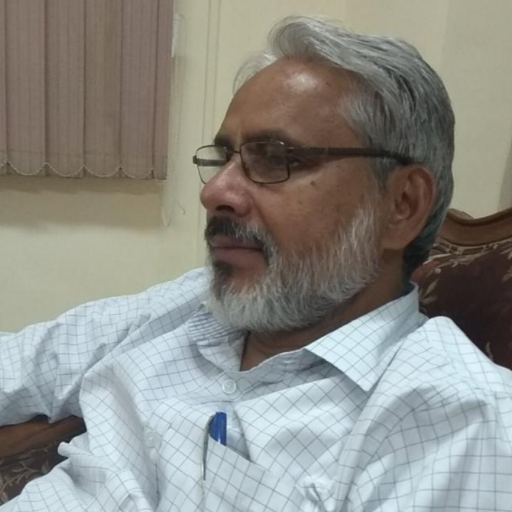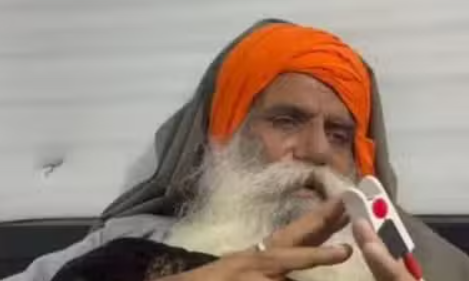THE ASIAN INDEPENDENT UK-
Prem Singh

It is a good development that the Samyuykt Kisan Morcha (SKM) has indicated a supportive attitude towards the farmers’ resistance movement being carried out under the joint aegis of the Samyukt Kisan Morcha (non-political) and Kisan Mazdoor Morcha at Khanauri and Shambhu borders. The talks among the leadership are going on in a positive atmosphere. One can hope that by learning from past experiences and forgetting the differences, if any, all farmers’ organizations in the country will unite towards solving the problems of agriculture and farmers. Just as there is agreement on the main demands of the farmers, it is also necessary to have agreement among the farmer leadership on the strategy to get those demands accepted by the central and state governments. The farmer leadership should also understand that the players of corporate politics should not be allowed to divert the energy of the farmers’ movement in their favour. That is, the farmer leadership should remain committed to long-term solutions along with the immediate solution of the crisis faced by the agriculture sector in India.
But at present, the biggest task before the leaders of both the joint farmer fronts is to save the life of senior farmer leader Jagjit Singh Dallewal, who has been on a hunger strike for the last 51 days at the Khanauri border. The farmer leaders who have come with the movement should not let Dallewal’s hunger strike become a “maran-vrat”. There has been no dearth of sacrifices of farmers’ lives in the process of indiscriminate liberalization/privatization going on in the country for the last three and a half decades. Lakhs of farmers and agricultural labourers have committed suicide. This series is still continuing intermittently. Three farmers involved in the present protest at Shambhu and Khanauri borders have committed suicide being upset with the callous attitude of the government. According to the farmer leaders, 700 farmers were martyred in the year-long farmer movement against the three agricultural laws. Many farmers have become targets of security forces’ bullets in water-forest-land (jal-jungle-jameen) battle waged against their own governments. Six farmers were killed by police bullets in the Mandsaur firing incident, the trigger point of the farmer resistance of 2020-21. If the problem of land acquisition and low prices for crops could be solved by sacrificing lives, it would have done so long ago. Experience shows that the sacrifice of farmers’ lives does not affect the ruling class.
So, first of all, Jagjit Singh Dallewal’s life should be saved by helping to break his fast unto death. Saving his life does not mean ending the movement. A new way can be found to continue the struggle. One way could be to do group satyagraha-fast. A group of a certain number of farmers should carry out a satyagraha-fast for 21 (or more or less) days. After 21 days, another group should sit on a satyagraha-fast. This should continue until a satisfactory agreement is reached with the government on the demands. Farmers from other parts of the country can join the satyagraha-fast at their respective places. The country’s agriculture crisis directly affects the lives of farm labourers, labourers in the organised-unorganised sector and those employed in the service of the brand-players national/multinational companies doing business in the retail sector. At least the labour unions of the organised and unorganised sector can join the Satyagraha-fast. Small traders and entrepreneurs can also participate according to their convenience and strategy. If concerned citizens of the service and industry sector want to, they too can be a part of Satyagraha-fast. If not, some other mode of action or resistance can be adopted. But Dallewal’s fast unto death should be ended immediately.
Along with a new strategy of resistance, farmers will also have to think about the immediate and long-term solution to the crisis in the agriculture sector. Legal guarantee of Minimum Support Price (MSP) for crops, loan waiver etc. should definitely be the immediate measures, but these are not the solution to the crisis. It is going to be a long struggle. The experience till now is that the farmer movement has been used in favour of neo-liberal forces. Kishan Patnaik has said that the farmer movement should also create its own politics. For Kishan Patnaik, creating its own politics refers to the politics of opposition to neoliberalism. Whether it was the farmer movement of the eighties and nineties, or the farmer movement of the twenty-first century, till now it has been seen that the farmer leadership only goes as far as opposing neoliberalism. The farmer leadership has generally not been interested in creating the politics of opposition to neoliberalism which has been the root cause of the crisis. For politics, it remains dependent on mainstream political parties. At the same time, it seems to be imprisoned in the cages of religion, caste, region and patriarchy. Nevertheless, the biggest space of possibilities for the creation of new politics can and should be the countryside of India.
The farmer leadership will have to understand the reality that in the situation of neoliberal consensus in the country, a huge sector like agriculture cannot remain autonomous from the neoliberal network. Sooner or later, it will have to be integrated with the neoliberal system. To speed up the process of integration, the Modi government passed three agricultural laws in the Parliament. Due to the long resistance of the farmers, the government withdrew the laws, but at the same time it also made it clear that those laws would be brought back soon. This is bound to happen. All three agricultural laws, even if it’s in a slightly changed form, will come back sooner or later.
The ruling class of India finds the solution to the agricultural crisis only in the corporatization of agriculture. However, the experience of Europe and America shows that corporatized farming is also in crisis. Despite huge subsidies, farmers there have to come on the streets again and again. The famous Seattle resistance against corporatisation at the World Trade Organisation (WTO) ministerial conference in November 1999, a decade after the Washington Consensus, is in front of the world, including India. But the ruling class does not seem ready to think of any alternative model other than the imported corporate model.
This task has to be done by the farmer leadership. There are mainly two categories of agricultural economists in India. One is those who view this crisis from a corporate-centric perspective and consider corporatisation of agriculture to be the solution to the crisis. The second are those who view the crisis from a constitution-centric perspective, i.e., from the perspective of the Directive Principles of State Policy, and want to solve it accordingly. It would be appropriate to mention Devinder Sharma here. He is an active public intellectual in agricultural matters. He has an in-depth knowledge of both, corporate-centric and constitution-centric, models. Along with this, he has a good knowledge of the state of agriculture in all the countries of the world. Furthermore, he physically participates in the farmers’ movement. His own inclination is towards a constitution-centric solution to the agricultural crisis. The farmer leadership should try to find immediate and long-term solutions to the agricultural crisis in India by taking along concerned intellectuals like Devinder Sharma; and by discussing the issues with agricultural economists from both the above mentioned categories.
(The writer associated with the socialist movement is a former teacher of Delhi University and a fellow of Indian Institute of Advanced Study, Shimla)








